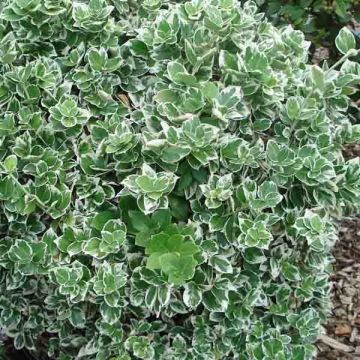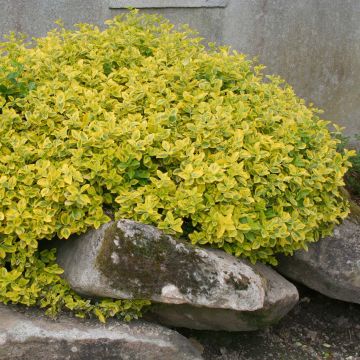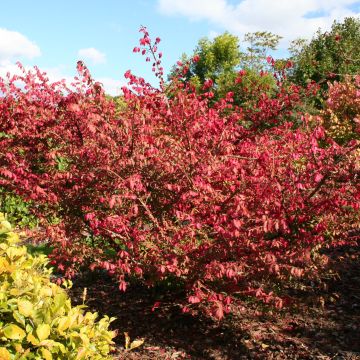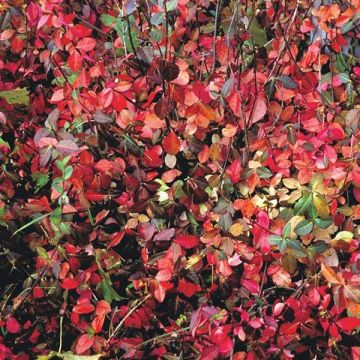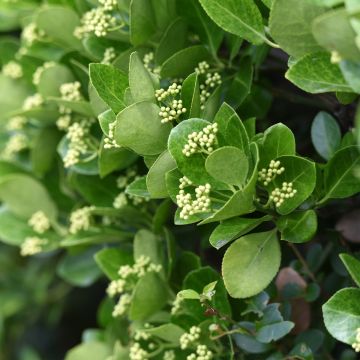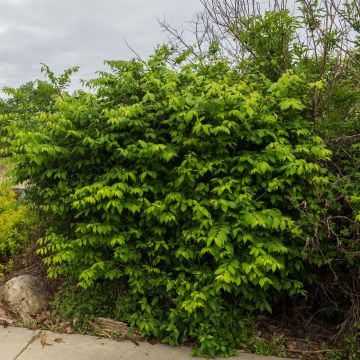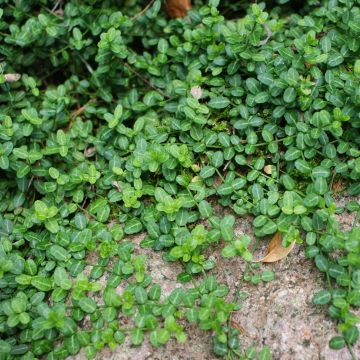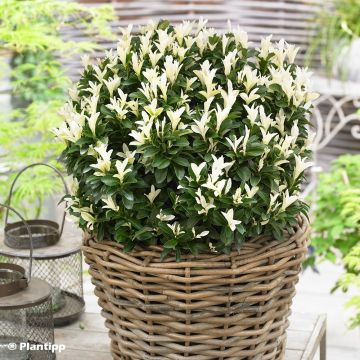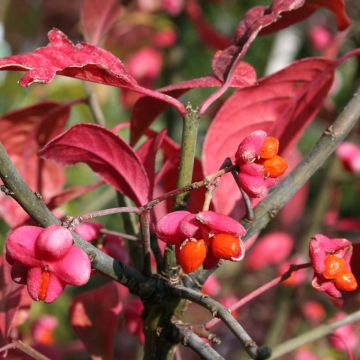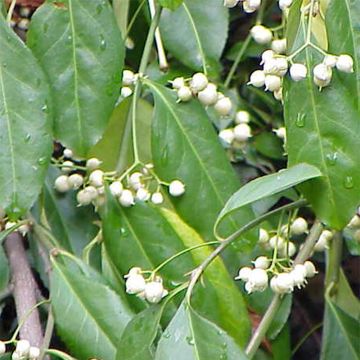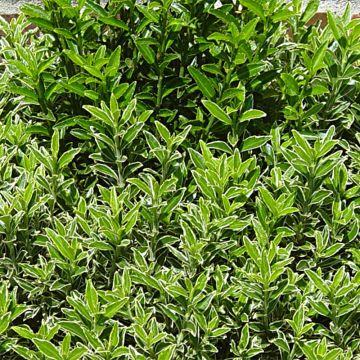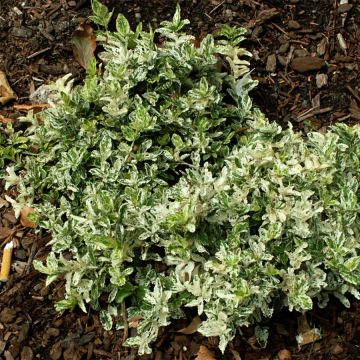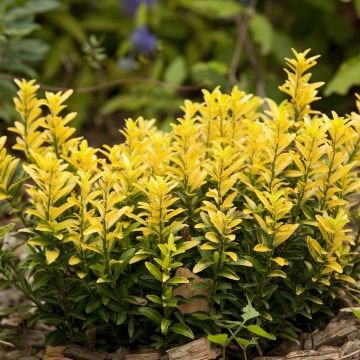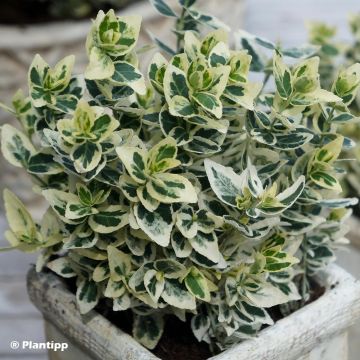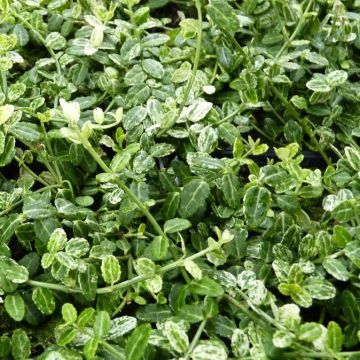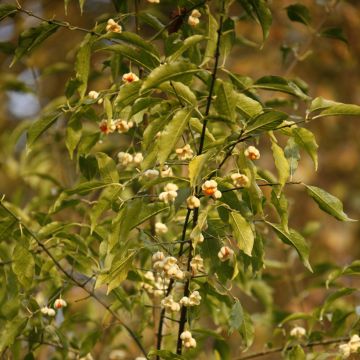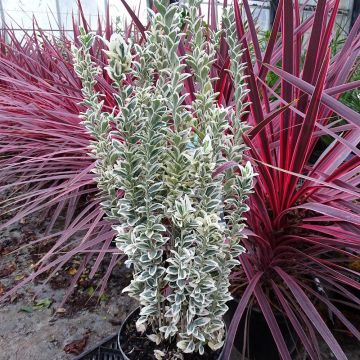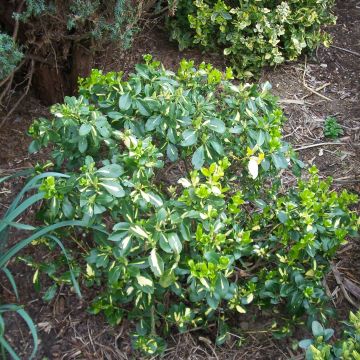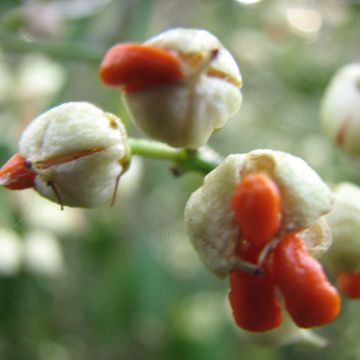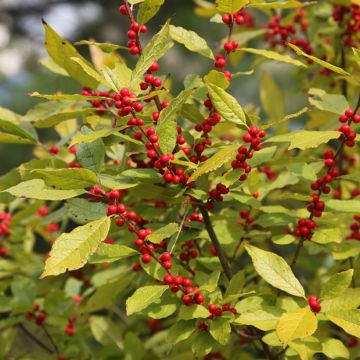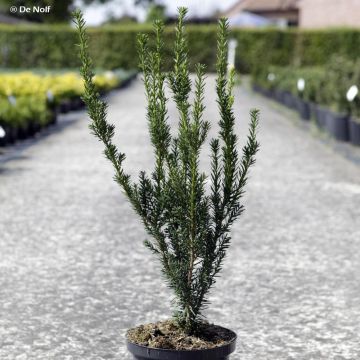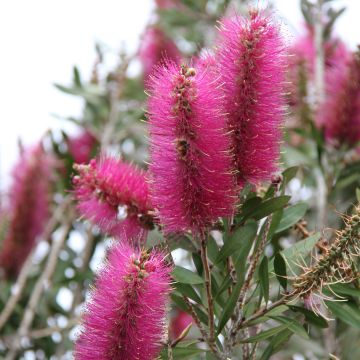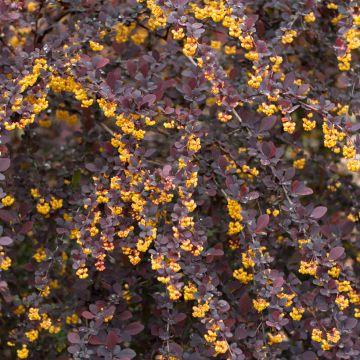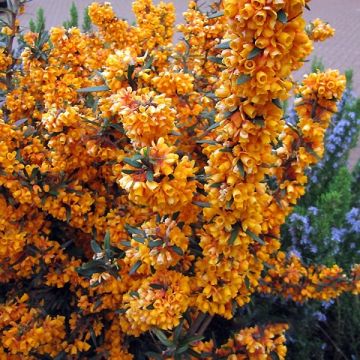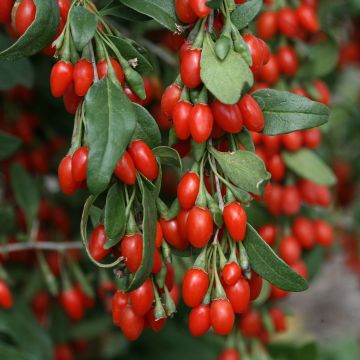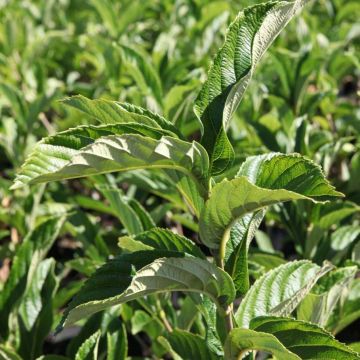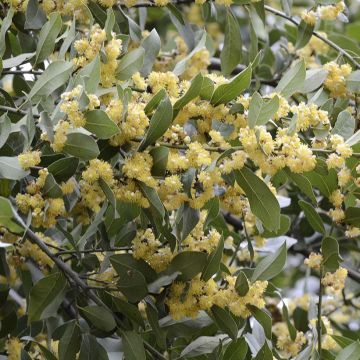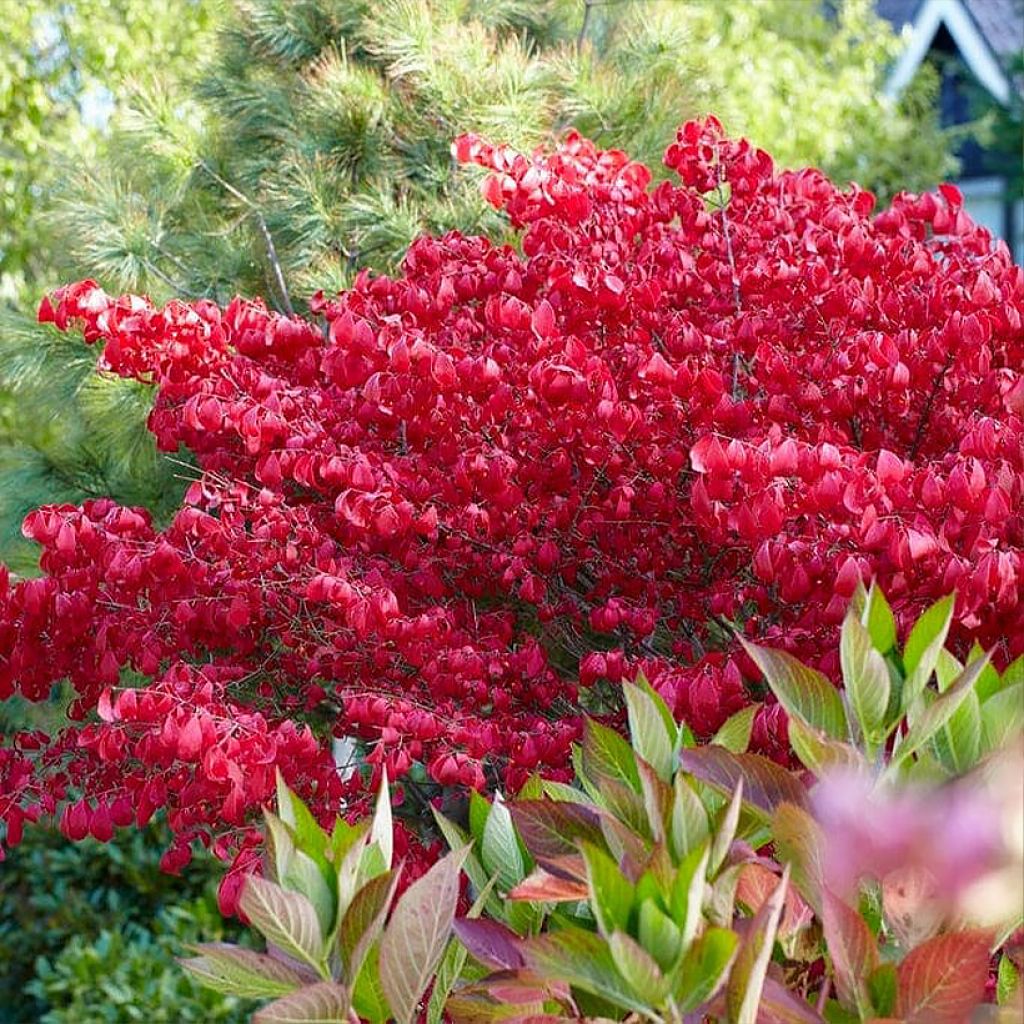

Euonymus alatus Blade Runner
Euonymus alatus Blade Runner
Euonymus alatus Blade Runner
Why not try an alternative variety in stock?
View all →This plant carries a 24 months recovery warranty
More information
We guarantee the quality of our plants for a full growing cycle, and will replace at our expense any plant that fails to recover under normal climatic and planting conditions.
From €5.90 for pickup delivery and €6.90 for home delivery
Express home delivery from €8.90.
Does this plant fit my garden?
Set up your Plantfit profile →
Description
Euonymus alatus 'Blade Runner' is a variety of Compact Winged Euonymus, naturally quite rounded. This deciduous shrub is particularly attractive for the vibrant colouration of its autumn foliage, a bright scarlet red that is eye-catching in the garden. The falling leaves reveal its original and ornamental branches, adorned with corky strips resembling thin wings. Stunning as a specimen, it can also be used to create spectacular hedges at the end of the season and integrates perfectly into mixed borders.
Euonymus, or Winged Euonymus, is a member of the Celastraceae family, of which we find few other representatives in our gardens, except sometimes the Oriental Bittersweet (Celastrus orbiculatus), while it includes about 80 genera and 850 species. Euonymus alatus grows naturally in northeastern Asia, central China, and Japan, where it forms a small,1 to 3 m tall bush with a rounded habit and spreading branches. Its branches, equipped with 2 to 4 corky wings, give it its species name alatus (winged) and it is decorative with its red fruits and orange seeds and especially with its autumn colours ranging from scarlet pink to purple. This Euonymus was introduced to Europe around 1860.
Euonymus alatus 'Blade Runner' is an improvement of the botanical species, distinguished by its denser and more branched growth. Its spreading and almost spherical habit, more or less irregular, allows it to be easily pruned into a ball shape, or you can leave it in its natural, wild silhouette. It is relatively slow-growing and will reach about 1.50 m in all directions after about ten years, typically reaching 1.80 m at maturity. The slender branches are erect at the base, then spreading to form a cup shape and arching at their tips. They are green, especially when young, adorned with corky strips approximately 5 to 6 mm wide and very narrow, running along the entire length of the branch. In winter, when the leaves have fallen, they give the plant an intriguing, ornamental appearance.
The leaves of this Euonymus are elliptical to obovate, with a pointed tip, and measure 3 to 5 cm long. They are dark green, borne on short petioles and naturally curve downwards, giving this shrub a very recognizable appearance. In spring, in May-June, small yellowish-green flowers appear, grouped in clusters of 3 or 4, without ornamental interest. However, they are followed by the classic decorative fruits in the Euonymus genus, deep purple-red with an orange central aril. The aril is a fleshy covering that surrounds the seed, which is toxic if ingested, so be careful! In autumn, the foliage changes from dark green to bright scarlet red, sometimes passing through a flaming dark pink, and classifies this Euonymus in the group of shrubs with the most beautiful autumn colours.
Easy to grow and virtually maintenance-free, the 'Blade Runner' Euonymus deserves a place in all gardens, as the spectacle it offers in autumn is magnificent. Its compact habit allows it to be easily integrated into a border or a mixed hedge. Create an incredible scene by planting it at the base of a Ginkgo biloba 'Horizontalis', the Maidenhair Tree in its tabular form, slightly trailing. In autumn, its golden yellow foliage will create a striking contrast with the vibrant red of the Euonymus. For strong contrasts without waiting for autumn, choose Cercis canadensis 'Eternal Flame'. This Eastern Redbud with its lovely heart-shaped leaves starts its growth in bright red tones, gradually turning orange and yellow before finally green. Early in the season, before the flowers appear, it will reward you with charming pink flowers directly on the bare wood. And to complete your border, if you have a little space left, plant an Amber Beauty Manchurian Cherry that will enchant you all year round. Its delicate and fragrant white spring flowers turn into small black fruits, its green foliage turns golden yellow in autumn, and in winter, its magnificent ornamental orange bark can be admired.
Report an error about the product description
Plant habit
Flowering
Foliage
Botanical data
Euonymus
alatus
Blade Runner
Celastraceae
Cultivar or hybrid
Other Euonymus - Spindle tree
Planting and care
Euonymus alatus 'Blade Runner' is best planted in autumn in any well-drained, deep soil, even limestone or clay, in a sunny or lightly shaded location. Soak the root ball in a bucket for fifteen minutes before planting, during which time, dig a hole 50 cm on each side and at the bottom and mix planting compost with the existing soil. Position the root ball, backfill around it and water thoroughly. Water during the first two years, especially in hot and dry periods.
Pruning is unnecessary. It is better to pinch the young plants to encourage branching and only remove dead or diseased wood. In poor soil, apply fertiliser twice a year, in early spring and autumn. In case of prolonged drought, especially if the plants are young, water to maintain beautiful foliage. Once well established after 2 or 3 years, this bush requires no maintenance and can do without watering in summer, even in hot and dry climates, as long as it has sufficiently deep soil to draw some moisture from. It has few pests and no diseases. Plant multiple specimens for better fruiting.
Planting period
Intended location
Care
This item has not been reviewed yet - be the first to leave a review about it.
Hedge shrubs
Haven't found what you were looking for?
Hardiness is the lowest winter temperature a plant can endure without suffering serious damage or even dying. However, hardiness is affected by location (a sheltered area, such as a patio), protection (winter cover) and soil type (hardiness is improved by well-drained soil).

Photo Sharing Terms & Conditions
In order to encourage gardeners to interact and share their experiences, Promesse de fleurs offers various media enabling content to be uploaded onto its Site - in particular via the ‘Photo sharing’ module.
The User agrees to refrain from:
- Posting any content that is illegal, prejudicial, insulting, racist, inciteful to hatred, revisionist, contrary to public decency, that infringes on privacy or on the privacy rights of third parties, in particular the publicity rights of persons and goods, intellectual property rights, or the right to privacy.
- Submitting content on behalf of a third party;
- Impersonate the identity of a third party and/or publish any personal information about a third party;
In general, the User undertakes to refrain from any unethical behaviour.
All Content (in particular text, comments, files, images, photos, videos, creative works, etc.), which may be subject to property or intellectual property rights, image or other private rights, shall remain the property of the User, subject to the limited rights granted by the terms of the licence granted by Promesse de fleurs as stated below. Users are at liberty to publish or not to publish such Content on the Site, notably via the ‘Photo Sharing’ facility, and accept that this Content shall be made public and freely accessible, notably on the Internet.
Users further acknowledge, undertake to have ,and guarantee that they hold all necessary rights and permissions to publish such material on the Site, in particular with regard to the legislation in force pertaining to any privacy, property, intellectual property, image, or contractual rights, or rights of any other nature. By publishing such Content on the Site, Users acknowledge accepting full liability as publishers of the Content within the meaning of the law, and grant Promesse de fleurs, free of charge, an inclusive, worldwide licence for the said Content for the entire duration of its publication, including all reproduction, representation, up/downloading, displaying, performing, transmission, and storage rights.
Users also grant permission for their name to be linked to the Content and accept that this link may not always be made available.
By engaging in posting material, Users consent to their Content becoming automatically accessible on the Internet, in particular on other sites and/or blogs and/or web pages of the Promesse de fleurs site, including in particular social pages and the Promesse de fleurs catalogue.
Users may secure the removal of entrusted content free of charge by issuing a simple request via our contact form.
The flowering period indicated on our website applies to countries and regions located in USDA zone 8 (France, the United Kingdom, Ireland, the Netherlands, etc.)
It will vary according to where you live:
- In zones 9 to 10 (Italy, Spain, Greece, etc.), flowering will occur about 2 to 4 weeks earlier.
- In zones 6 to 7 (Germany, Poland, Slovenia, and lower mountainous regions), flowering will be delayed by 2 to 3 weeks.
- In zone 5 (Central Europe, Scandinavia), blooming will be delayed by 3 to 5 weeks.
In temperate climates, pruning of spring-flowering shrubs (forsythia, spireas, etc.) should be done just after flowering.
Pruning of summer-flowering shrubs (Indian Lilac, Perovskia, etc.) can be done in winter or spring.
In cold regions as well as with frost-sensitive plants, avoid pruning too early when severe frosts may still occur.
The planting period indicated on our website applies to countries and regions located in USDA zone 8 (France, United Kingdom, Ireland, Netherlands).
It will vary according to where you live:
- In Mediterranean zones (Marseille, Madrid, Milan, etc.), autumn and winter are the best planting periods.
- In continental zones (Strasbourg, Munich, Vienna, etc.), delay planting by 2 to 3 weeks in spring and bring it forward by 2 to 4 weeks in autumn.
- In mountainous regions (the Alps, Pyrenees, Carpathians, etc.), it is best to plant in late spring (May-June) or late summer (August-September).
The harvesting period indicated on our website applies to countries and regions in USDA zone 8 (France, England, Ireland, the Netherlands).
In colder areas (Scandinavia, Poland, Austria...) fruit and vegetable harvests are likely to be delayed by 3-4 weeks.
In warmer areas (Italy, Spain, Greece, etc.), harvesting will probably take place earlier, depending on weather conditions.
The sowing periods indicated on our website apply to countries and regions within USDA Zone 8 (France, UK, Ireland, Netherlands).
In colder areas (Scandinavia, Poland, Austria...), delay any outdoor sowing by 3-4 weeks, or sow under glass.
In warmer climes (Italy, Spain, Greece, etc.), bring outdoor sowing forward by a few weeks.


































